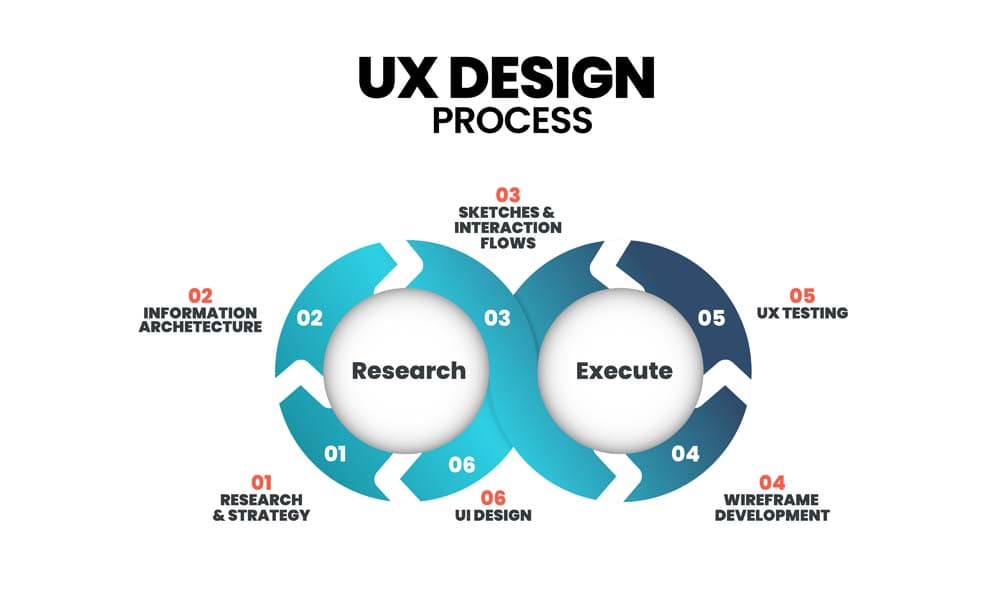Introduction
In the sprawling digital landscape, User Experience, UX design stands out as the compass directing user satisfaction and business success. It’s a subtle art and a precise science that aims at delivering the most efficient, enjoyable, and intuitive interaction between the user and the product. However, a common pitfall is designing for oneself rather than the end-user. A slight diversion from this principle can lead to a chasm between the user’s needs and the product’s purpose.
The distinction is simple: design for the user and not for personal aesthetics or preferences. This brings us to the crux of the matter.
The Underlying Psychology: Walking in the User’s Shoes
The core of UX is understanding and resonating with the user’s mindset. It’s not about creating what you think is aesthetically pleasing or technologically impressive. It’s about crafting interfaces and experiences that align with the user’s expectations, needs, and behaviors.
At its foundation, this involves studying user behaviours, collecting feedback, and incessantly iterating. A design that may look appealing to one could be complex or unattractive to another. Diverse user profiles necessitate a wide-angle lens on UX.
Evolution of UX Design: From Vanity to Value
Historically, digital designs were heavily influenced by aesthetics. As the digital space evolved, it became evident that design wasn’t just about “looking good”; it was about “feeling right.” A visually pleasing website that’s cumbersome to navigate is like a beautiful maze – intriguing, but frustrating.
User-cantered designs focus on utility, simplicity, and intuitiveness. They prioritize clarity over complexity, ensuring users can achieve their goals effortlessly.
The Pitfalls of Personal Bias: A Double-Edged Sword
Designers are artists. They have a personal style, aesthetic preferences, and sometimes even a signature touch. But when these personal biases overshadow user preferences, problems arise.
While it’s essential to bring creativity to the table, it’s equally crucial to ensure that personal biases don’t dictate the design. A feature or style that seems intuitive or appealing to a designer might not resonate with the user base, leading to confusion or disengagement.
The Metrics Speak: Numbers Don’t Lie
The importance of UX design is evident when we dive deep into metrics. Websites with a superior UX design can see reduced bounce rates, increased time spent on pages, and higher conversions.
If a design isn’t resonating with your user base, the numbers will show it. Continuous tracking, A/B testing, and user feedback loops are indispensable tools to gauge the effectiveness of your UX and pivot when needed.
A Real-World Perspective: The Power of Feedback
A well-designed feedback mechanism not only identifies design issues but also sheds light on user behavior, expectations, and preferences. Direct user feedback, surveys, and usability tests offer designers an unfiltered view into the users’ world.
Harnessing this information paves the way for intuitive designs that users not only want but love. It’s about establishing a two-way conversation, where the users guide the design trajectory with their candid feedback.
Embracing Modern Tools: How Managed Hosting Can Help
Enter managed hosting solutions, like Dalaric, a WordPress Managed hosting company. They offer more than just hosting; they provide an environment optimized for performance, security, and, most notably, exceptional user experiences.
With faster load times, robust security, and streamlined operations, platforms like Dalaric ensure that the UX design you’ve carefully crafted is delivered consistently to every user. In essence, they amplify the results of your diligent UX efforts, ensuring that technical glitches don’t hamper the impeccable experience you aim to provide.
The Future of UX: Navigating the Horizon of Human-Computer Symbiosis
From Digital to Physical: Augmented Reality & Beyond
As the boundary between the physical and virtual worlds blurs, Augmented Reality (AR) and Virtual Reality (VR) are steering UX design into uncharted territories. Users are no longer satisfied with just digital experiences; they crave for immersive, real-time interactions. Imagine trying on clothes in a virtual store or walking through a digital reconstruction of a historical site. The future UX designer needs to think beyond 2D screens and incorporate 3D spaces, creating environments where the user feels seamlessly integrated.
Anticipatory Design: Predictive User Experiences
The term ‘anticipatory design’ might sound futuristic, but its roots are being firmly planted. With the aid of Artificial Intelligence (AI) and machine learning, future platforms will not just react to user input but anticipate it. Picture logging into a food delivery app that already knows you’re probably craving Thai cuisine today based on your past orders and current trends. By eliminating unnecessary choices and streamlining processes, anticipatory design will redefine what we understand as intuitive UX.
Emotional Recognition: Designing for Feelings
With advancements in emotional recognition technology, platforms will soon gauge user reactions through facial expressions, voice modulation, and other physiological cues. This will allow for real-time adjustments to the user experience. For instance, if an e-learning platform detects a user’s confusion or frustration, it can automatically modify content delivery to be more digestible or provide instant assistance. This emotional layer will ensure that UX is not just about what users do but also about how they feel.
Universal Design: Beyond Global, Think Galactic
We are moving towards a truly global (and possibly interplanetary) digital audience. The future of UX will revolve around designing for diverse cultures, languages, abilities, and perhaps even species. As we eye space exploration and potential interplanetary colonization, who’s to say UX won’t extend to aliens or AI entities? This is, of course, a whimsical speculation, but the principle remains: the future UX should be universally inclusive.
Ethical Implications: Balancing Innovation and Responsibility
As UX pushes the boundaries of innovation, ethical considerations will play an even larger role. Issues like privacy, digital wellbeing, and data security will be at the forefront. The future UX designer won’t just be a technician but also a guardian of user rights and values. Striking a balance between creating immersive experiences and ensuring users’ digital rights will be a defining challenge of future UX paradigms.
In Conclusion: The Art of Balancing
Striking the right balance between personal creativity and user-centric design isn’t easy. It requires introspection, feedback, and, sometimes, taking a step back to see the larger picture. UX is not about the designer or the business; it’s about the user. Ensuring that this principle remains front and centre is the key to digital success.
Navigating this horizon requires UX professionals to be adaptable, visionary, and, most importantly, empathetic. While tools, technologies, and platforms will evolve, the core principle of user-centric design will remain unchanged. The future beckons with promises of unexplored experiences, and the UX world is gearing up for this enthralling journey.

WordPress Managed Hosting, Setup, Security, Design and Maintenance Specialists
We provide WordPress services that include full WordPress setup to an agreed specification, web design, managed hosting and enterprise-level security features. We then provide maintenance services to keep your website running securely and with a high level of performance.


